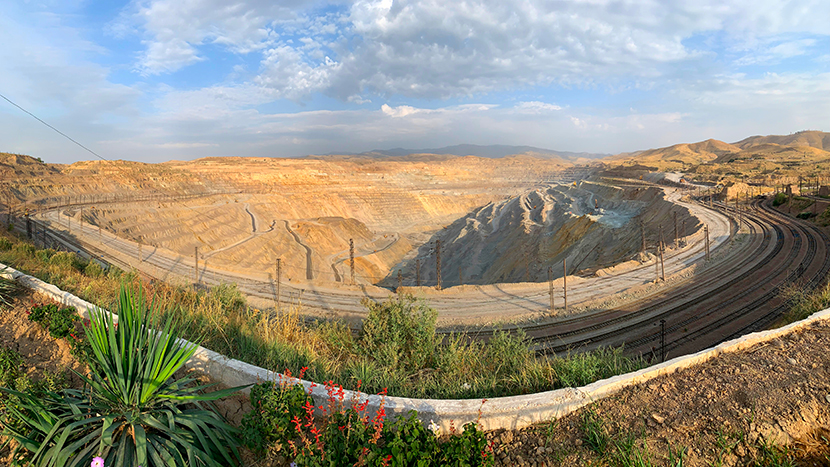JV Article: SRK Consulting promotes probabilistic methods for open pit slope assessments


Optimizing the assessment of risks associated with pit slope failures is of paramount importance for ensuring the safety of mine personnel and equipment. Equally important is the avoidance of business interruption and damages to haul roads accessing the bottom of a pit. Lives can be lost, equipment can be buried, and production interruptions can cost millions of dollars per day. In extreme cases, pits may never recover.
From probabilistic geomechanical models to failure and event trees and, more recently, the development of advanced yet simple computational techniques like ORE2_Slopes by SRK consultants Dr. Franco Oboni and Cesar Oboni and a new approach by Dr. Luis-Fernando Contreras, risk analysis methodologies have evolved through a continuous process of refinement and innovation.

According to SRK Consulting’s Dr. Oboni, a geotechnical and civil engineer with more than 30 years of international experience in risk management, reliance on traditional geomechanical methodologies alone lacks temporal specificity making them inadequate for determining the annualized probability of failures that may be caused by “day-to-day” hazards as well as extreme events such as torrential rains, seismic activity or any number of other natural or man-made hazards.
“You need to use a geomechanical approach because we are building with geo materials,” said Dr. Oboni. “The traditional methodologies evaluate the odds that the driving forces will overcome the resisting forces in the slope at a point in time. A quantitative risk analysis encompassing the ORE2_Slopes methodology delivers an annualized probability of pit slope failure, so it’s not a question of one or the other methodology. It’s always one and the other.”
The ORE2_Slopes methodology, or the parallel approach proposed by Dr. Contreras bring similar results. They bridge the gap between static assessments and dynamic risk evaluations, “allowing mining companies to swiftly establish and evaluate the economic impact of failures that will occur in a pit over the life of a mine.”
“A pit evolves day to day,” explains Dr. Oboni, whose company, Riskope Associates, merged with SRK in May 2023. “A pit in 2020 is different from the same pit in 2021 and the 2021 pit is different from the pit in 2024. That makes risk analysis a perishable exercise. If we do a risk analysis of a pit today, that risk analysis will have limited validity depending on the speed at which conditions vary, the pit deepens and is excavated.”
A risk analysis of slope stability is only valid, he added, as long as the pit slopes, the operation’s standard operating procedures and monitoring systems remain unchanged, making periodic updates necessary. Updates can be very simple if very little has changed, or they can be drastically different from a prior analysis. It is paramount to use methodologies that are swift such as ORE2_Slopes.

“An annualized probability of failure, for example, is fundamental for evaluating the size of the stockpile buffer that you want to have at surface so that if a failure damages or destroys a section of the haul road and material can’t be extracted from the pit, the whole mining operation isn’t impacted,” noted Dr. Oboni. In such an eventuality, a mine can take material from the stockpile and continue production while the pit is being repaired.
“Sizing the stockpile is very important because if you oversize it, you’re wasting money, and if you undersize it and there is a mishap, you end up not having enough material to continue production. Annualized probabilities of pit slope failures can rationally assess risk and optimize stockpile size including the inevitable uncertainties.”
The white paper, Annualised Probabilities of Pit Slope Failures Using Two Methods, authored by Dr. Contreras, Dr. Oboni and Dr. Oboni’s son, Cesar, provides a comparative analysis of Dr. Contreras’ approach and ORE2_Slopes using a real-world case study and comparing the results to real-life pit behavior. The paper, scheduled for publication in the Australian Geomechanics Journal, provides a novel, unified framework for quantitative risk assessment of open pit slopes.
The publication of the paper and a planned series of speaking engagements by Dr. Oboni are intended to create better awareness of evolving risk assessment methodologies that allow miners to make better decisions that protect human life and mitigate potential losses.
The preceding Joint Venture Article is PROMOTED CONTENT sponsored by SRK Consulting and produced in co-operation with MINING.com. For more information visit www.srk.com.
Comments